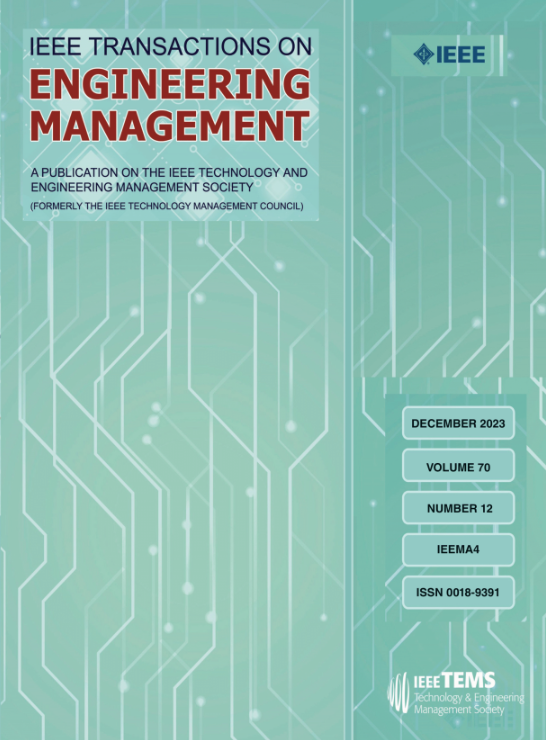Does Overconfidence Impede an Innovation Chain? Implications for Investor Operations
IF 4.6
3区 管理学
Q1 BUSINESS
引用次数: 0
Abstract
Overconfidence is a prevalent cognitive bias and exists practically in innovation investment and operations, while it is widely acknowledged to be detrimental to innovation. This study examines an innovation chain consisting of an investor and an overconfident innovator, wherein the investor is committed to supporting the innovator with capital and resources, and the innovator is responsible for the products’ innovation and production. Specifically, we focus on three types of innovators that exsit in practice, namely, completely rational innovator, probabilistically overconfident innovator, and market-overconfident innovator. We then explore the impact of overconfidence on both the investor and innovator. We find that the innovation effort level of the innovator is not correlated with the degree of probabilistic overconfidence but increases monotonically with the degree of market overconfidence. Counterintuitively, when the degree of market overconfidence is weak, such overconfidence strengthens the incentives for both the investor and the innovator to invest and innovate; our results suggest that appropriate market overconfidence may improve the investor's profit, whereas probabilistic overconfidence consistently reduces it. Both probabilistic overconfidence and market overconfidence are detrimental to the innovator. Overall, overconfidence undermines the performance of the entire innovation chain. Furthermore, our study extends to the analysis where the investor cannot know the innovator's type, and reveals that the main results derived in the basic model still hold.过度自信会阻碍创新链吗?对投资者运作的影响
过度自信是一种普遍存在的认知偏差,在创新投资和运营中实际存在,并被广泛认为不利于创新。本研究考察了一个由投资者和一个过度自信的创新者组成的创新链,投资者承诺为创新者提供资金和资源支持,创新者负责产品的创新和生产。具体来说,我们重点研究了实践中存在的三种类型的创新者,即完全理性创新者、概率过度自信创新者和市场过度自信创新者。然后,我们探讨了过度自信对投资者和创新者的影响。研究发现,创新者的创新努力水平与概率过度自信程度不相关,而是随着市场过度自信程度的增加而单调增加。与直觉相反,当市场过度自信程度较弱时,这种过度自信增强了投资者和创新者投资和创新的激励;我们的研究结果表明,适当的市场过度自信可以提高投资者的利润,而概率过度自信则会降低投资者的利润。概率上的过度自信和市场上的过度自信都不利于创新者。总体而言,过度自信会破坏整个创新链的绩效。此外,我们的研究扩展到投资者不知道创新者类型的分析,并表明在基本模型中得出的主要结果仍然成立。
本文章由计算机程序翻译,如有差异,请以英文原文为准。
求助全文
约1分钟内获得全文
求助全文
来源期刊

IEEE Transactions on Engineering Management
管理科学-工程:工业
CiteScore
10.30
自引率
19.00%
发文量
604
审稿时长
5.3 months
期刊介绍:
Management of technical functions such as research, development, and engineering in industry, government, university, and other settings. Emphasis is on studies carried on within an organization to help in decision making or policy formation for RD&E.
 求助内容:
求助内容: 应助结果提醒方式:
应助结果提醒方式:


